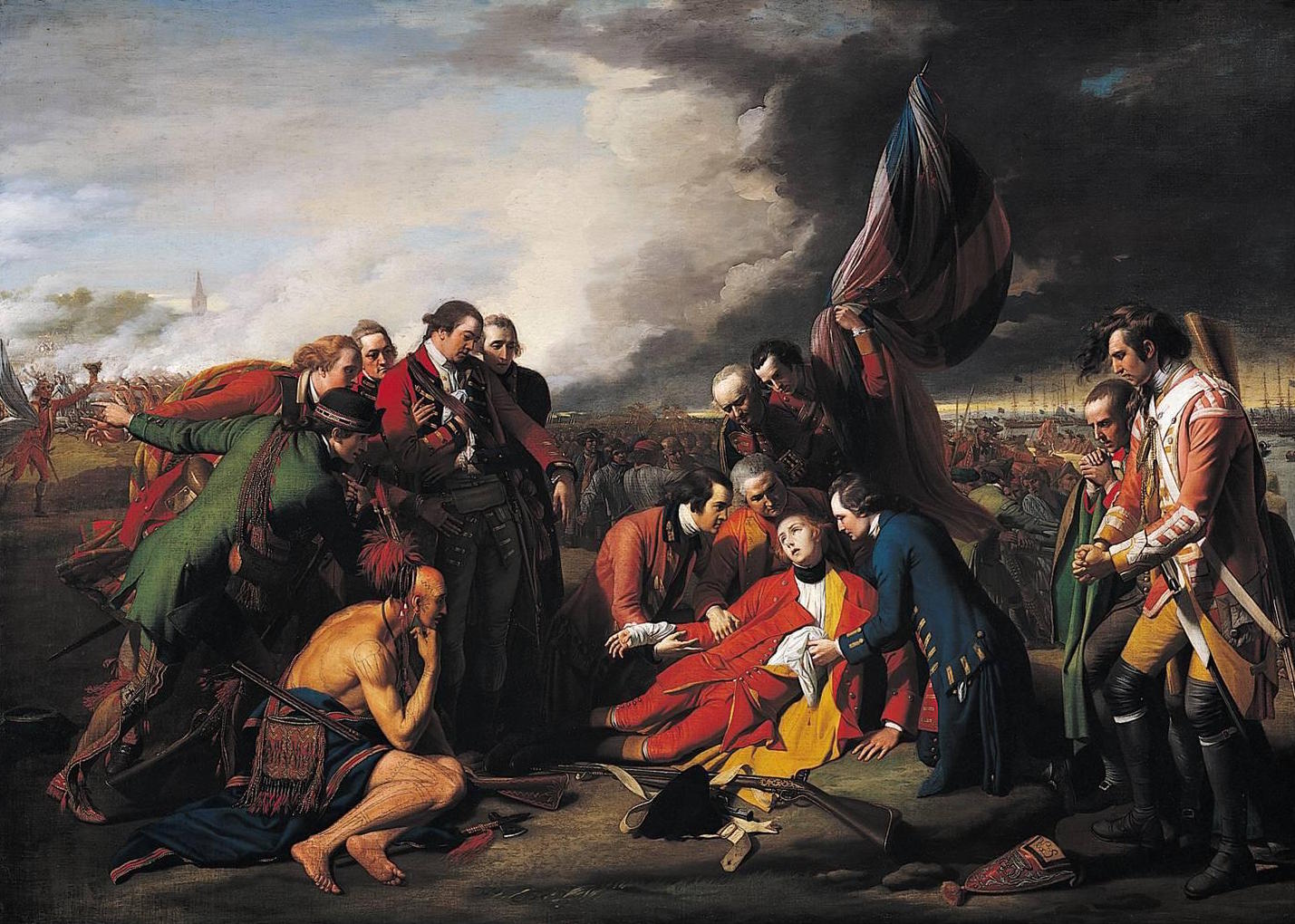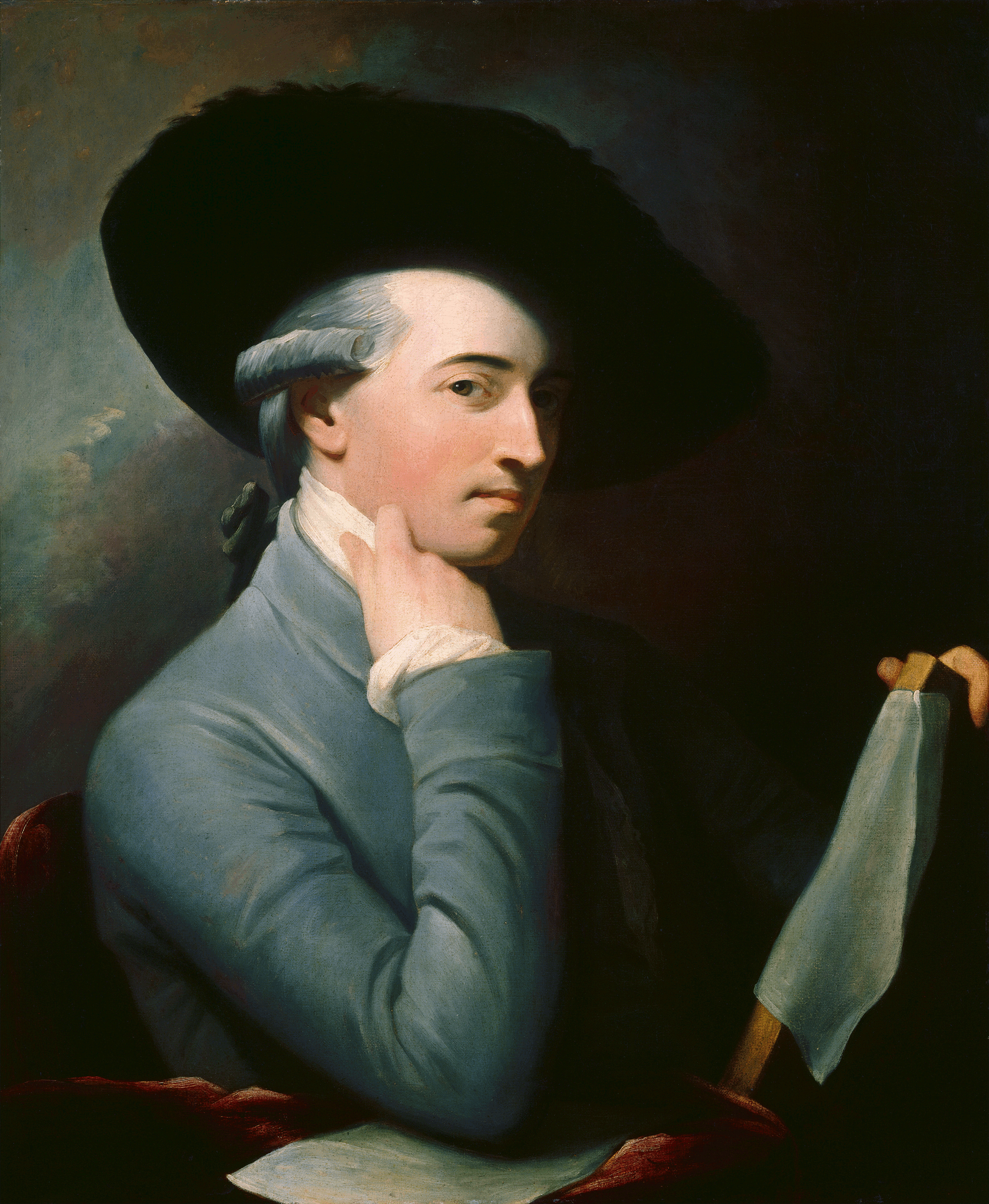When Benjamin West exhibited The Death of General Wolfe, at the Royal Academy in London, it caused a controversy. Even though George III liked West and owned 65 of his paintings, he was advised by Sir Joshua Reynolds not to purchase it. The dispute was over the clothing of the protagonists. The painting depicts the moment General Wolfe dies at the Battle of the Plains of Abraham, a battle that took place in 1759, between France and Britain over Quebec. General Wolfe is aware of British Victory before he dies, making his a death worthy of the cause. West had used the traditional pyramidal composition with the flag being the top of the pyramid and placed General Wolfe and the surrounding figures in a pose that recalled the Lamentation of Christ, but he had depicted the figures of a history painting in contemporary garb. Up until now, the figures in history paintings had always appeared in antique armor, as a matter of fact, West was asked to change the clothing but he refused. Some, like Archbishop Drummond, strongly urged West to avoid painting Wolfe and others in modern costume, which was thought to detract from the timeless heroism of the event. They urged him to instead paint the figures wearing togas. West refused, writing, “the same truth that guides the pen of the historian should govern the pencil [paintbrush] of the artist.” To add insult to injury, he also had General Wolfe in a very plain uniform. There was also the problem of the fictitious American Indian, in the front of the picture plain who is sitting by the group in deep thought, observing the two countries fighting over a land that belonged to the natives. This may be a reference to the noble savage Rousseau had written about, who happens to be much simpler and more virtuous than those corrupted by all the vices of modern society. We dedicate this painting to our dearest Canadian users, especially to Mike Jones who suggested this painting.




The Death of General Wolfe
oil on canvas • 1,51 m x 2,13 m
 Benjamin West
Benjamin West